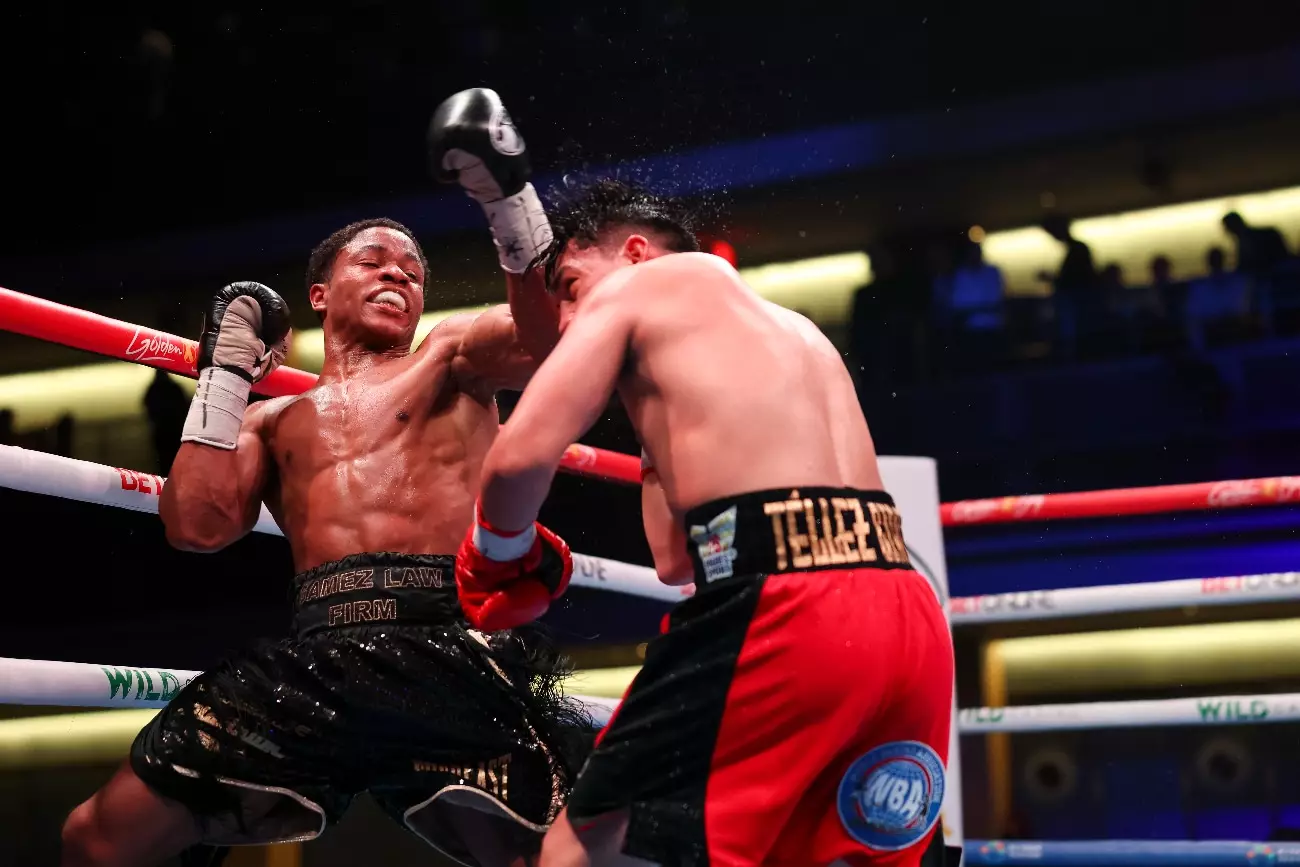In the world of professional boxing, timing often plays as crucial a role as skill. It’s a dynamic dance where experience, opportunity, and ambition must align perfectly to achieve success. Floyd ‘Kid Austin’ Schofield Jr., a rising talent in the lightweight division, finds himself at a crossroads as he prepares to challenge WBC lightweight champion Shakur Stevenson. Prominent promoter Oscar De La Hoya has expressed mixed feelings about Schofield’s decision to take on this formidable opponent so early in his career. As they gear up for their highly-anticipated encounter on February 22nd in Riyadh, Saudi Arabia, questions linger regarding the implications of this audacious move.
Oscar De La Hoya, a seasoned veteran of the sport, recognizes the potential that Schofield possesses but simultaneously cautions against the rapid pace of his rise. With a record of 18-0 and 12 KOs, Schofield is undeniably talented, yet De La Hoya believes that patience could yield better long-term results. He articulated, “I had a plan for you, we have a strategy for you,” reflecting a protective outlook for Schofield. However, the influence of Schofield’s father, Floyd Sr., appears to have played a decisive role in the decision to push for an immediate title shot.
This conflict between the calculated approach of a promoter and the fervent aspirations of a fighter and his father encapsulates a broader tension within the sport. De La Hoya acknowledges Schofield’s throwback mentality—one defined by the willingness to face anyone, anywhere—but he deems it “a little too ambitious.” Such tensions are not uncommon in boxing, where the lure of championship glory often overshadows rational strategy.
It is crucial to consider the financial motivations behind Schofield’s eagerness to face Stevenson. Prizefighting may primarily showcase athletic prowess, but it is also a business—one where lucrative opportunities can be fleeting. De La Hoya suggests that the Schofield camp sees this title fight as a financial boon, which, given the circumstances, might be a sensible decision in a sport that can be unpredictable. Prizefighters that take calculated risks often find themselves in a better financial situation when compared to those who opt for a more prolonged developmental path.
Yet, pursuing financial rewards should not overshadow the associated risks, particularly when the stakes are as high as a championship belt. Schofield’s recent performances, including bouts against fighters like Rene Tellez Giron, indicate that while he is on the rise, he might not yet be ready to tackle the elite competition.
While De La Hoya warns against the perils of premature challenges, he remains hopeful about Schofield’s ability to capitalize on potential openings during the fight. Stevenson, fresh off recovery from an injury, presents a target. De La Hoya argues that Schofield should apply relentless pressure, forcing Stevenson into a brawl that could expose his vulnerabilities, particularly if he struggles with the demands of boxing with a weakened hand.
De La Hoya highlights the importance of employing a strong jab and maintaining an upright fighting stance—key elements that could tip the odds in Schofield’s favor. By fighting tall and utilizing footwork to navigate the ring, he could disrupt Stevenson’s rhythm and create opportunities for damage. This approach leans into both Schofield’s strengths and Stevenson’s weaknesses, particularly against strong, aggressive opponents.
Ultimately, the fight promises not just fireworks but a study in contrasts: ambition versus caution, skill versus experience, and the allure of glory against the harsh realities of the boxing world. While De La Hoya believes in Schofield’s potential to dethrone a pure boxer like Stevenson, he acknowledges the formidable challenge ahead. History shows that matchups involving skilled defensive boxers can be particularly tricky for less experienced challengers.
The conversation surrounding Schofield and Stevenson transcends their individual capabilities, representing a pivotal moment in the future of boxing highlighted by the quest for recognition in a cutthroat sport. As the fight approaches, observers will watch closely, knowing that in boxing, one moment can craft legends or forge bitterness.
While Floyd Schofield Jr. faces considerable risks, his ambition reflects the fierce spirit of competition that lies at the heart of boxing. The youthful thirst for glory pitted against seasoned wisdom sets the stage for an unforgettable showdown, one that could encapsulate the essence of what it means to take a risk in pursuit of greatness.

